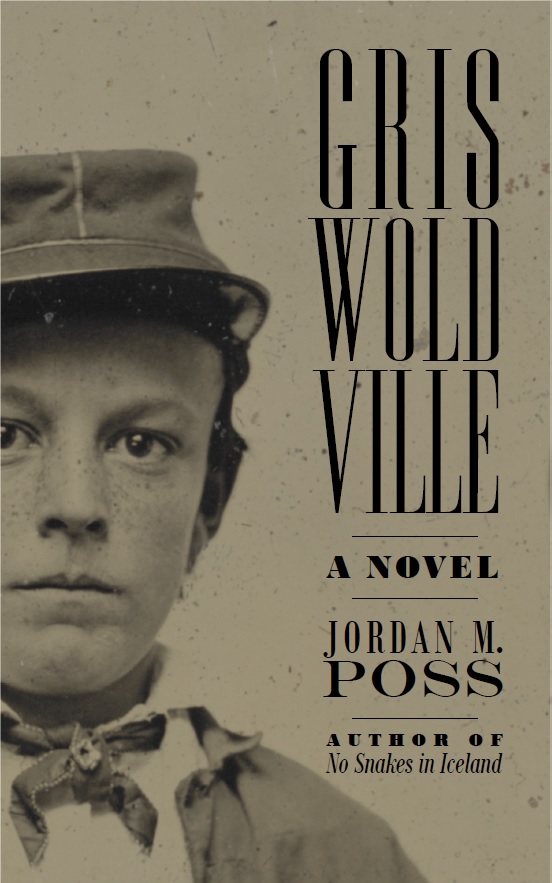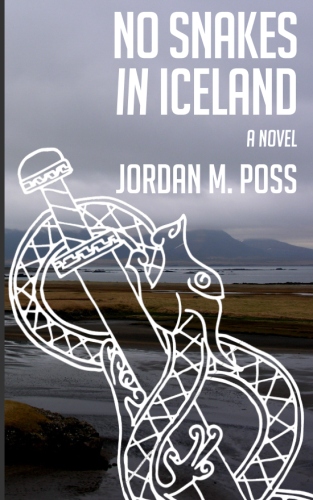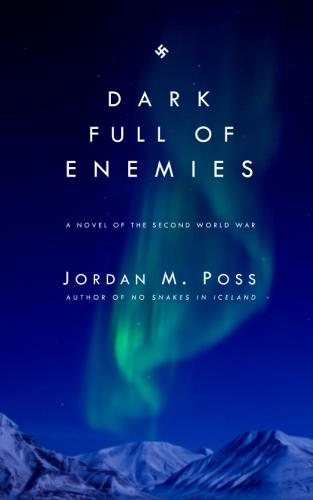Back in January I grew sufficiently annoyed with misunderstandings of what passive voice is to write about that here. Now it’s December and as the result of a more recent irritation I’m bookending 2022 with another post on misunderstood grammar, this time concerning a much rarer creature from the bad writing bestiary.
In the “Dumb Sentences” segment of a recent episode of 372 Pages We’ll Never Get Back, a bad books podcast hosted by Mike Nelson of “Mystery Science Theater 3000” and Conor Lastowka of RiffTrax, a listener submitted the following sample from the show’s current read, a cozy mystery called Murder in Christmas River:
But then, a pickup truck pulled up, and a boy got out and pulled his guitar from the flatbed, and he walked over and sat down, and mesmerized everyone there with his playing and singing.
The listener who mailed this sentence in criticized it as a self-evidently ridiculous “run-on sentence.” The writing is inelegant, inconsistently punctuated, and somehow both vague and very specifically cliched, but this is not a run-on sentence.
What a run-on sentence is
A run-on sentence is a fusion of two independent clauses, clauses that could stand on their own as sentences, into one sentence with no division between the two clauses. Some further explanations:
From Grammarly: “Run-on sentences, also known as fused sentences, occur when two complete sentences are squashed together without using a coordinating conjunction or proper punctuation, such as a period or a semicolon.”
From UNC Chapel Hill’s Writing Center: “These are also called fused sentences. You are making a run-on when you put two complete sentences (a subject and its predicate and another subject and its predicate) together in one sentence without separating them properly.”
From the University of Michigan’s Sweetland Center for Writing: “A run-on sentence is two or more independent clauses incorrectly presented in a single sentence.”
A run-on sentence is not
This is much simpler to explain than the many things people mistake for passive voice, because the one thing people commonly mistake for a run-on sentence is a sentence that, to them, subjectively, just goes on too long. Because it runs on, you see.
But that’s not why the run-on sentence has that name. The mental image conjured by “run-on sentence” should be more like the head-on collision of two trucks than someone wheezing his way through a marathon.
Here are a few things that I’ve seen called run-on sentences that are not:
The opening paragraph of “Great Caesar’s Ghost,” Kevin D Williamson’s marvelous takedown of an annually observed imperial spectacle here in the US:
The annual State of the Union pageant is a hideous, dispiriting, ugly, monotonous, un-American, un-republican, anti-democratic, dreary, backward, monarchical, retch-inducing, depressing, shameful, crypto-imperial display of official self-aggrandizement and piteous toadying, a black Mass during which every unholy order of teacup totalitarian and cringing courtier gathers under the towering dome of a faux-Roman temple to listen to a speech with no content given by a man with no content, to rise and to be seated as is called for by the order of worship—it is a wonder they have not started genuflecting—with one wretched representative of their number squirreled away in some well-upholstered Washington hidey-hole in order to preserve the illusion that those gathered constitute a special class of humanity without whom we could not live.
This is all one long, elaborately structured sentence—especially in its second half, with parenthetical interjections and dependent clauses—but it is grammatically correct. (Subject: State of the Union. Verb: is. Predicate: all the rest.) It is not a run-on sentence.
Occasionally people mistake a sentence as a run-on not because of its length but because of a stylistic choice, such as Cormac McCarthy’s use of polysyndeton—the repeated use of conjunctions like and, especially as a substitute for commas. Here’s an example pulled at random from McCarthy’s novel Blood Meridian:
The last one fell in a doorway and Tobin turned and drew the other pistol from his belt and stepped to the other side of the horse and looked up the street and across the square for any sign of movement there or among the buildings.
Here’s another from earlier in the book:
They posted guards atop the azotea and unsaddled the horses and drove them out to graze and the judge took one of the packanimals and emptied out the panniers and went off to explore the works.
Again, these are all long sentences that could be broken up into separate ones, but they are joined grammatically correctly with a conjunction. This is a stylistic choice, not a mistake. To break these sentences up would be to lose their tonal effect, one of both busy movement, solemnity, and distance.
I think the author criticized in the listener e-mail to 372 Pages was straining for this effect—a more artistic way to suggest a boy’s activities over an entire evening. It was not well done but not that badly done either, and the author certainly did not commit the catastrophic grammatical blunder of writing a run-on sentence.
Actual run-on sentences
Real run-on sentences are not a matter of stylistic difference or minor mistakes, like spelling errors or typos, but a grotesque mashing together of two sentences that produces obviously wrong grammar. I use the word obviously deliberately. You can dither about stylistic choices all day but there is no mistaking a run-on as anything but an error.
The run-on is such an elementary mistake that I actually had a hard time finding mentions of it in my books on writing. Even the classic, Strunk and White, only mentions the comma splice (see below). But the run-on is covered thoroughly in a lot of writing aids for students, like that UNC guide I linked to above. Here’s the example provided there:
My favorite Mediterranean spread is hummus it is very garlicky.
Here’s one from another university writing center:
Raffi sings upbeat children's songs he is an excellent musician.
Anyone reading these sentences would immediately see the mistake.
As a result, it is exceedingly rare to see an actual run-on sentence in professionally published writing. But they are rife in informal writing, especially—speaking from my own experience—student writing.
Here’s an exmample of a run-on sentence I recently spotted in the wild. This comes from a letter by Maria Clemm, Edgar Allan Poe’s beloved mother-in-law, recounting his last words to her as he left on a business trip from which he never returned:
God bless my own darling Muddy do not fear for your Eddy see how good I will be while I am away from you, and will come back to love and comfort you.
This is three sentences fused into one, but I think anyone would be forgiving of an old lady writing a personal recollection by hand in an era in which letters were not held to the same standards of punctuation (or even capitalization, as in this letter by Thomas Jefferson) as published writing. But in rare cases real run-on sentences do show up in modern, professional writing.
The run-on’s more respectable cousin
Let me pause here to note the existence of the comma splice, which makes almost the same mistake as the run-on sentence but separates the two clauses with a single comma, like this:
Greg Maddux played for the Braves for elevens seasons, he was one of their best pitchers.
The comma splice is sometimes conflated with the run-on (as in Dreyer’s English, where he treats them as the same thing), but I learned them as separate mistakes and I’m going to stick with that. My reason: comma splices can sometimes work as a stylistic choice (see the quotation from Garner’s Modern English Usage here), but a run-on is always a mistake.
Identifying and fixing run-on sentences
To return briefly to what a run-on sentence is, it is not just a long or grammatically complex sentence, but will have:
The result, as I’ve tried to emphasize, is obviously incorrect. Real run-on sentences sound childish. When you run across one or, God forbid, accidentally write one, identification is not usually the problem. (Misidentification is, which is why I wrote this.)
Fixing them can be relatively easy, depending on how much you care about style. The two simplest mechanical fixes are:
Sticking a semicolon between the two clauses. Like Cormac McCarthy, I hate semicolons and would prefer two separate sentences to the unholy hybrids created by this punctuation, but separating the clauses this way is grammatically correct and a legitimate option.
Breaking the clauses into separate sentences. My preferred solution, but one that—again, if you care about style and sound—might turn a run-on into a pair or string of equally childish-sounding simple sentences.
After choosing either of these solutions you can go on to weigh the stylistic choices and all the wonderfully complex artistic questions they raise—sound, tone, structure, rhythm, connotation, and on and on. You may end up reworking an entire paragraph, or more. But sometimes, as anyone who drives an older car will understand, just getting the obvious mechanical problem fixed is the most important step.
Conclusion
My main problem with run-on sentences is not the error itself, which, as I’ve suggested above, is 1) easily indentifiable and 2) easy to fix. My main problem with run-on sentences is the term itself. “Run-on sentence” is misleading, suggesting to many people for a long time that any long or complex sentence is somehow a mistake, and I wish there were a more precise term for this elementary error. Perhaps “fused sentence,” the alternate term used in a few of the definitions I quoted earlier, is the best candidate. It certainly suggests what the actual mistake is with more precision than “run-on.”
But until a term like “fused sentence” or something else can displace the one we’re most familiar with, I hope this will be a helpful guide to what a real run-on sentence is, and that people will go easier on authors who try something a little different and come up a little short.














